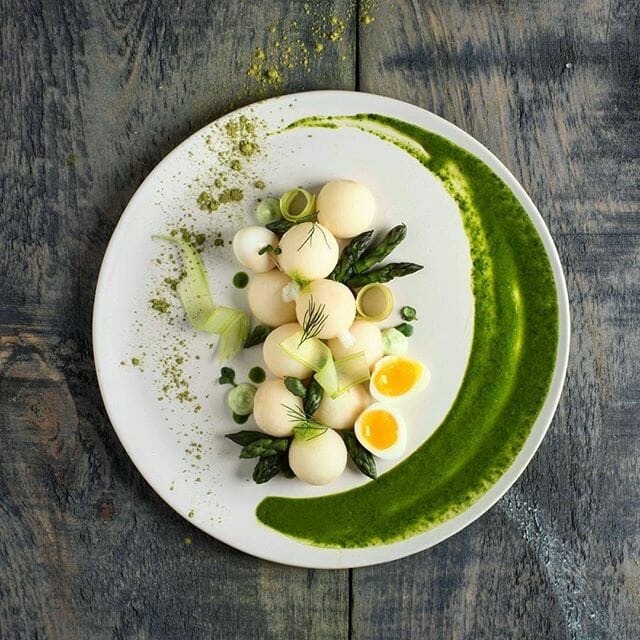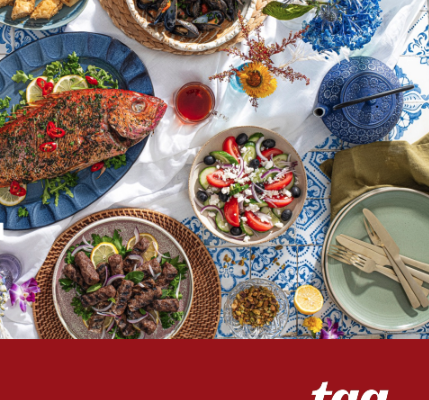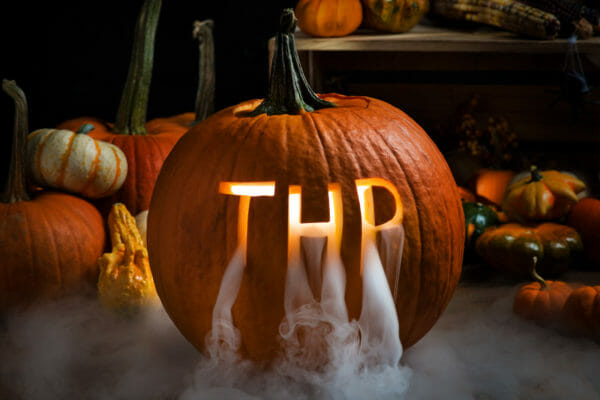To all the fellow foodies out there – we know that when it comes to enjoying a good meal, it’s so much more than just simply indulging. Eating food is an experience from start to finish and it’s important that your copywriting reflects this. Unfortunately, we’re not at the point where we can download our dinners, so it’s up to you to create that experience and sensation for consumers! Follow along with our tips and tricks for drool-worthy food copywriting and make your readers’ taste buds go wild.
Use Sensory Words
With food blogging, the images of the dish do most of the hard work, but that doesn’t mean the copy is unimportant. The audience can see that the picture of the pastry looks delicious, but it’s your job to describe the sensation that you get from that first bite. Add strong adjectives to elaborate on the details and highlight decadent flavors of the dish you are describing. You want to evoke all of the possible flavors the reader will taste from salty, to savory to sour, to bitter, to sweet! Take the way Ben & Jerry’s describes their Empower Mint Ice Cream for example, “This cool concoction packs quite the peppermint punch… but what you’ve really gotta watch out for are those gooey, chocolatey, fudgy brownies nestled in the tub”. Can’t you just taste the creamy mint melting in your mouth?

Be as Descriptive as Possible
When writing about food, don’t be afraid to go into detail! Describe the smell, the sounds, the colors, the plating and arrangement of the dish. Remember, the reader is relying on you to convey the entire sensory experience. Use your words to heighten the senses and break down every element! Describe the ingredients, the preparation and the cooking process to paint a full picture of the care that went into creating the meal.
Use Vibrant and Trendy Words
Incorporating jargon that is used often in the food world will help your copywriting be relevant, engaging and familiar. There are the classics like “tasty”, “appetizing”, “yummy”, but there are also some newer, more daring phrases like “food porn”, or “mouth-watering”. These words can signal to your audience that you know what you are talking about and help you stand out from your competition.
Tell a Story and Sell the Experience
When writing copy about food, you don’t want to just focus on the ingredients, but you want to elaborate on the whole story of the eating experience from first bite to that feeling of total satisfaction at the end of a meal. Use an active, persistent voice that carries the reader through the course of the dish. Take KIND Bars as an example: “At KIND, we love fall’s crisp mornings and cozy sweaters. To celebrate, we’re bringing back our limited edition Caramel Almond Pumpkin Spice bar! With crunchy almonds, smooth caramel and a kick of pumpkin spice, this bar captures fall flavors in a snack so good, you’ll wish the season would never end.” This description ties together the flavors and feelings of fall to perfectly captivate the reader!

Use Emojis
Adding emojis into your copy is another fun way to evoke emotion related to food. In the same way that a picture is worth 1000 words, emojis can convey a feeling that is at times difficult to verbalize. Using certain emojis can help get the point across a lot faster and can resonate better. There is a wide variety of food related emojis, and so don’t be afraid to get creative! Let’s 🌮 bout how much fun emoji’s are!
Play on Words
Adding some light-hearted, fun phrases into your copy will make the reader’s experience even more enjoyable. Using food puns and writing devices like alliteration, similes and metaphors can leave the reader with more total entertainment value. Comparing food textures and tastes to other experiences will describe the feeling of eating food in a way that generic descriptions can’t! Here are a few examples we can’t stop laughing at:
- Let us = lettuce eat!
- I love = Olive you so much.
- Exciting = eggcited!
Coordinate Image and Tone
Use the images you have of your food as your inspiration. If your dish is delicate and fine, use language that is sophisticated, serious and careful. If your dish is full-bodied and rich, use language that is bold, assertive and decadent. Your copy is the counterpart to your images, so you want to make sure that there is consistency!
Crafting the perfect copy for your food can be a challenging task. You need to create a sensory experience, conveying smell, texture, and taste using just your words. However, by using fun, creative and descriptive language you can bring your readers along on the savory experience and truly make your copywriting drool-worthy.
Need to take your copy writing from just gouda to great? Schedule a call to discuss how Tag can help.

Food Photography Tips & Tricks for Brands: Capturing Cravings and Conversions

Happy Halloween from THP a Tag Company!



Comments are closed.